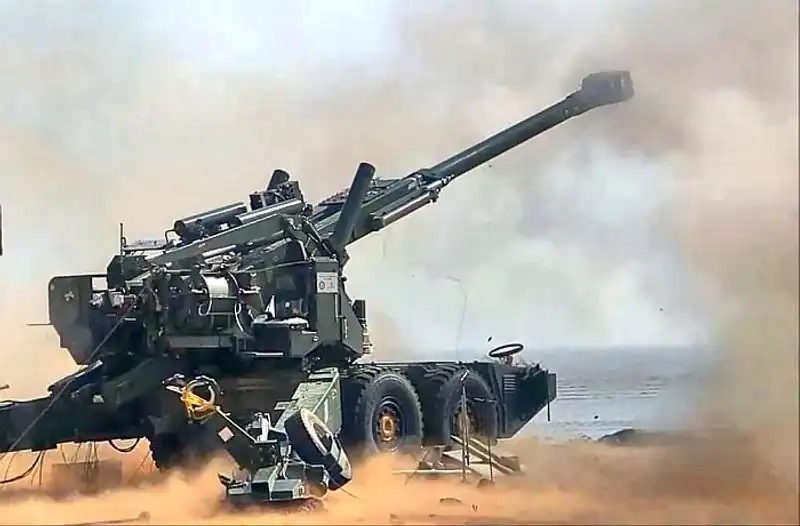SOURCE: AFI

Amidst reports that Azerbaijan, commonly referred to as Baku, has expressed interest in purchasing Indian-made weaponry, defence analyst Ranesh Rajan has highlighted a significant geopolitical caveat. Speaking to the AFI, Rajan stated that Baku must first distance itself from Islamabad and align with India’s stance on Kashmir before New Delhi would entertain the idea of selling Indian-made weapon systems to Azerbaijan.
The relationship between Baku and Islamabad has been notably warm, with Azerbaijan openly supporting Pakistan’s position on the Kashmir issue. This stance has historically been at odds with India’s national interests. Rajan’s comments suggest that India’s willingness to engage in defense trade with Azerbaijan would be contingent upon a shift in Baku’s foreign policy regarding Kashmir and its diplomatic relations with Pakistan.
According to idrw.org, Baku is particularly interested in acquiring Indian-made artillery guns. This interest comes in the wake of Armenia’s procurement of 90 Advanced Towed Artillery Gun Systems (ATAGS) from India. The ATAGS, developed by the Defence Research and Development Organisation (DRDO), is noted for its superior range compared to any other 155mm gun currently in service worldwide. With a range capability extending up to 48 kilometers using special ammunition, the ATAGS represents a significant technological leap over many existing howitzers, which are often based on designs from the 1980s or earlier.
The ATAGS is described as a next-generation 155mm howitzer, incorporating advanced technologies like an all-electric drive for its automatic ammunition handling system, advanced communication systems, and an auxiliary power unit for self-sustained operation. These features make ATAGS not only a formidable weapon in terms of range and accuracy but also in terms of operational flexibility and maintenance, aspects where older generation howitzers might lag.
The interest from Baku in Indian artillery like the ATAGS indicates a potential shift or at least an expansion in the sourcing of military equipment, traditionally dominated by suppliers like Turkey and Israel. However, Rajan’s remarks to AFI underscore that for any significant defense deal to occur, Azerbaijan would need to demonstrate a clear strategic realignment, particularly in its approach to regional conflicts like Kashmir.
While the interest in Indian weapons systems by Baku could open a new chapter in India-Azerbaijan relations, the path forward is fraught with diplomatic complexities. The situation highlights how defense trade in sensitive regions is not merely a matter of technology transfer but deeply intertwined with geopolitical strategies and alignments. If Azerbaijan were to recalibrate its foreign policy in line with Indian expectations, it could mark a notable shift in the military balance in the South Caucasus, potentially affecting the longstanding Armenia-Azerbaijan conflict as well.